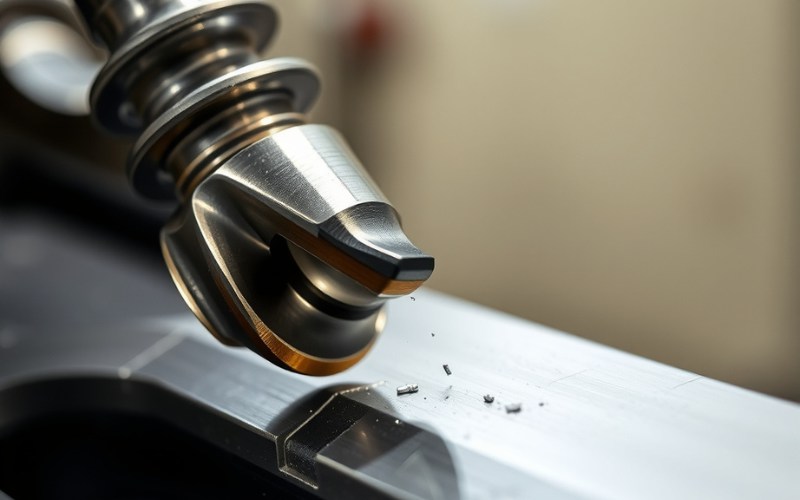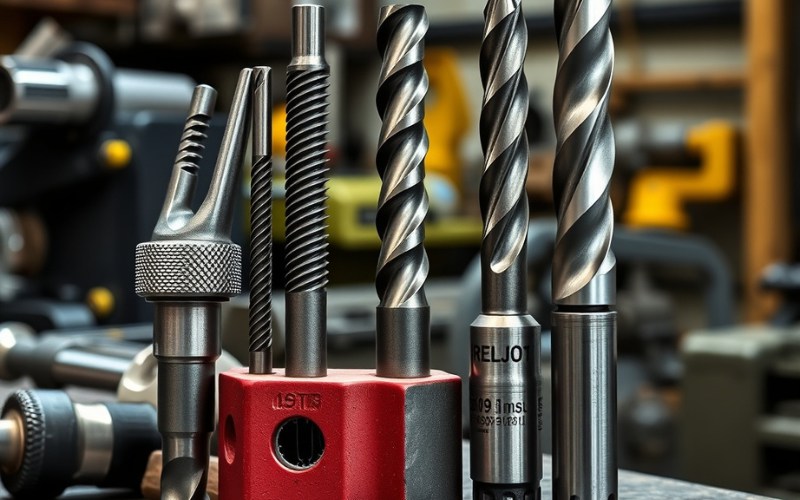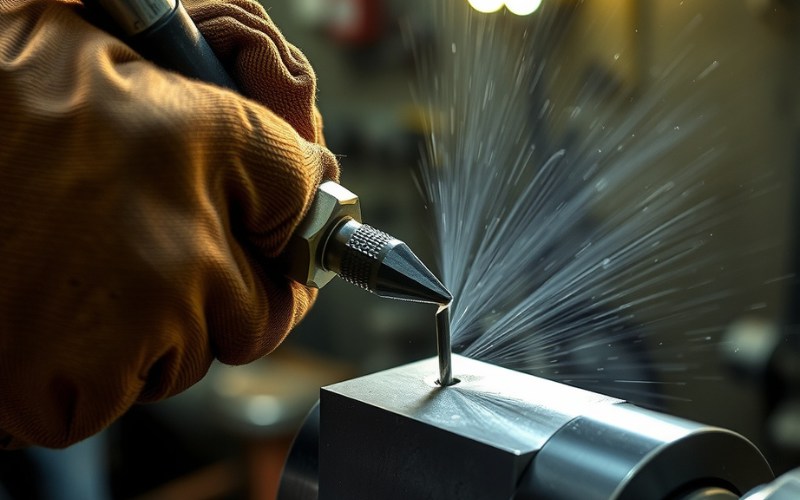Lasciate che Istar vi aiuti a iniziare il vostro progetto con la nostra esperienza e il nostro know-how!
Caricate i file del vostro progetto e i requisiti di produzione e vi risponderemo entro 30 minuti!

I’ve been in the machining business for a long time. I remember my first days looking at a workpiece, a drill, and a small, odd-looking tool called a tap. I was nervous. I knew that one bad move could wreck the part. That would cost my boss money. Over the years, I have broken more taps than I can remember. But I also learned the tricks to get it right almost every time. This article is where I will share those tricks with you. We will go over the entire tapping process. This starts with picking the right drill and ends with making perfect threads. Reading this will help you avoid the same expensive mistakes I made.
Let’s begin with the basics. In machining, tapping is how you make threads inside a hole. It is a very important step in a lot of projects. Why do we need threads? We need them so we can put in a bolt or a machine screw. Just think about it. Almost everything you see is put together with some kind of fastener. Tapping is the way we make the holes for those fasteners. The tapping process uses a special cutting tool called a tap. This tool has sharp edges that make threads as it spins.
The tapping process means you take a hole that is already drilled. Then you use a tap to cut threads on the inside. The tap spins and goes down into the hole. As it moves, its sharp cutting edges cut away metal. This makes a perfect spiral groove. That groove is the thread. So, tapping in machining is just the way we make threads. You can do this with your hands, with a tool like a drill press, or with a large, strong CNC machine. The goal is always to make threaded holes that are strong and correct. This machining process is used a lot in workshops.
People often ask me, “Why use tapping instead of other ways like thread milling?” For me, it comes down to a few easy reasons. First, tapping is very fast. It is extremely fast. This is especially true when you use a CNC machine. A CNC machine can tap many holes in just a few seconds. This speed saves a large amount of time and money, particularly on big jobs. Making threads with a tap is a very quick and easy process.
Here are some of the main advantages of tapping:
Now, tapping is not always perfect. I have had my share of annoying moments with it. The biggest problem is when the tool breaks. A tap is small and can break easily. If it breaks off inside a hole, especially a blind hole, it can be very hard to get out. This is a very big risk. A broken tap can wreck an expensive workpiece and waste a lot of your time.
Another problem is getting the small metal chips out during the tapping process. When the tap makes threads, it also makes tiny metal chips. In a hole that goes all the way through, the chips can be sent out the bottom. But in a blind hole, the chips can get stuck. This can make the tap jam and break. This is why picking the right tool is very important. Also, one tapping tool can only make one size and shape of thread. If you need a different thread size, you have to get a different tap. This is not like thread milling, where one tool can often make many thread sizes. These are the main problems with tapping.
You don’t always need a special tapping machine, but having one can be a big help. A special tapping machine is made for only one job: making threads. These machines give you great control. They help you line up the tap perfectly. This helps stop the tap from breaking. They are great for shops that do tapping work all the time. Many machines, like a drill press, can also be used for tapping if you have the right extra parts. A drill press offers you more control than doing the job by hand.
But the real star of the show today is the CNC machine. I do nearly all of my tapping on a CNC machine now. A new CNC machine is a great tapping machine. You can program it to manage the spindle speed and feed rate in a perfect way. This is very important for making good threads and for stopping tool wear. The CNC machine makes sure the tap is perfectly straight. It also makes sure it feeds at the right speed. It does not matter if you use a tapping machine or a CNC machine that can do many things. The most important things are control and lining it up right. Many CNC machine models are made for high-speed tapping jobs.

Picking the right tapping tool is one of the most important steps you will take. If you make a mistake here, you are going to have problems later. The right tool changes based on the material being tapped and the kind of hole you have. For most regular work, you will use standard machine taps. These are great for many kinds of materials. But if you are tapping hard or rough materials, you might need special taps. These are made from stronger materials or have special coatings to lessen tap wear.
The shape of the tap is also very important. For holes that go completely through, a spiral point tap is a wonderful choice. People sometimes call these “gun taps.” They have helical flutes that are made to push chips forward and away from the tool. For a blind hole, you must have a tap that can pull the chips up and out of the hole. This is the job for a spiral flute tap. It works like a drill bit to get the chips out. Picking the right tapping tool makes the tapping process much easier.
I must tell you this again and again: you have to use the correct size drill before you tap a hole. This is the top rule for tapping. If the hole you drill is too small, the tap will need to cut away too much material. This will make it get stuck, and it will almost surely break. I have seen this happen more times than I can count. A broken tap inside a workpiece is an expensive mistake.
If the hole you drill is too large, the threads will not be made deep enough. The thread profile will be weak. A screw or bolt that you put into this hole will not be able to hold on tightly. It might even strip out very easily. This can be a very dangerous situation if that fastener is holding something important. So, how can you find the right drill size? You can use a tap and drill chart. You can find these charts everywhere online or inside machine shops. They will tell you the perfect drill to use for every thread size. Always look at the chart before you drill. This one simple step will help you make correct threads and stop a lot of problems. A combination drill and tap tool can also be used in some cases on a CNC machine.
| Thread Size | Recommended Drill Size (inch) | Recommended Drill Size (mm) |
|---|---|---|
| 1/4″-20 | #7 | 5.10 mm |
| 5/16″-18 | F | 6.50 mm |
| 3/8″-16 | 5/16″ | 7.94 mm |
| M6 x 1.0 | #9 | 5.00 mm |
| M8 x 1.25 | 17/64″ | 6.80 mm |
| M10 x 1.5 | R | 8.50 mm |
Yes, I can. Let’s go through the steps of tapping a hole by hand. This is a great way for you to understand the basics. Even if you use a CNC machine, knowing how to do the manual tapping process is a useful skill.
Here is the step-by-step process of tapping:
This basic tapping process is the main idea for all thread cutting. A CNC machine does this for you, but the ideas are the same. This process uses a sharp tool to cut threads.
That is a very good question. Both manual tapping and CNC tapping are useful for different things. I learned with manual tapping, and I still use it today for fast fixes or for jobs I only do once. It is a great skill to possess. Manual tapping lets you get a “feel” for how the tool is cutting. You can feel if the tap is cutting smoothly or if it is starting to get stuck. This can help you stop the tap from breaking. A tap wrench is the main tool you use for manual tapping.
But, when you are making many parts, it’s not even close. CNC tapping is the clear winner. A CNC machine is faster, more correct, and can be repeated more easily. A CNC machine is able to tap hundreds or thousands of holes, and every single one will be exactly the same. This is something you are not able to do with manual tapping. CNC tapping also lowers the chance of a person making a mistake. The machine makes sure there is correct alignment. It also controls the cutting speeds in a perfect way. For making correct threads in a lot of holes, the CNC machine is the very best tool for the job. While manual tapping is good for a couple of holes, CNC machine tapping is best for a large number.
Tapping a blind hole is one of the hardest jobs you can do in machining. A blind hole is just a hole that does not go all the way through the material. The greatest danger here is that the chips have no place to go. They can get packed at the bottom of the blind hole. This makes the tap jam and break. It has happened to me, and believe me, it is not fun at all.
To tap a blind hole and do it right, you need a good plan. First, you must use the correct tap. A spiral flute tap is made to pull chips up and out of a blind hole, just like a drill does. You should never use a spiral point tap in a blind hole. Second, you should drill the hole a small amount deeper than the thread depth you really need. This creates a space for chips to gather at the bottom. Third, you must use a lot of cutting fluid to help wash those chips out. Lastly, if you are doing manual tapping in a blind hole, be very careful to turn the tap back often to break the chips. Using a bottoming tap will help you cut threads that are closer to the bottom of the blind hole. A CNC machine can be set up to work with a blind hole in a careful way.

Not all taps are made the same. For tapping by hand, taps usually are sold in a set of three. These are the taper tap, the plug tap, and the bottoming tap. Each one has a different job. To understand them is important for good tapping. It is all about how they begin to cut the threads.
For machine tapping, you will usually use just one tap. This might be a spiral point tap for through holes or a spiral flute tap for a blind hole. These machine taps are made to cut the full thread profile in a single pass on a CNC machine or drill press. Picking the right tool based on what the job needs is very important.
I have shared a lot of my own experience with you today. Tapping can be easy and something you can count on if you just follow the rules. Here are the most important things for you to remember from our talk: